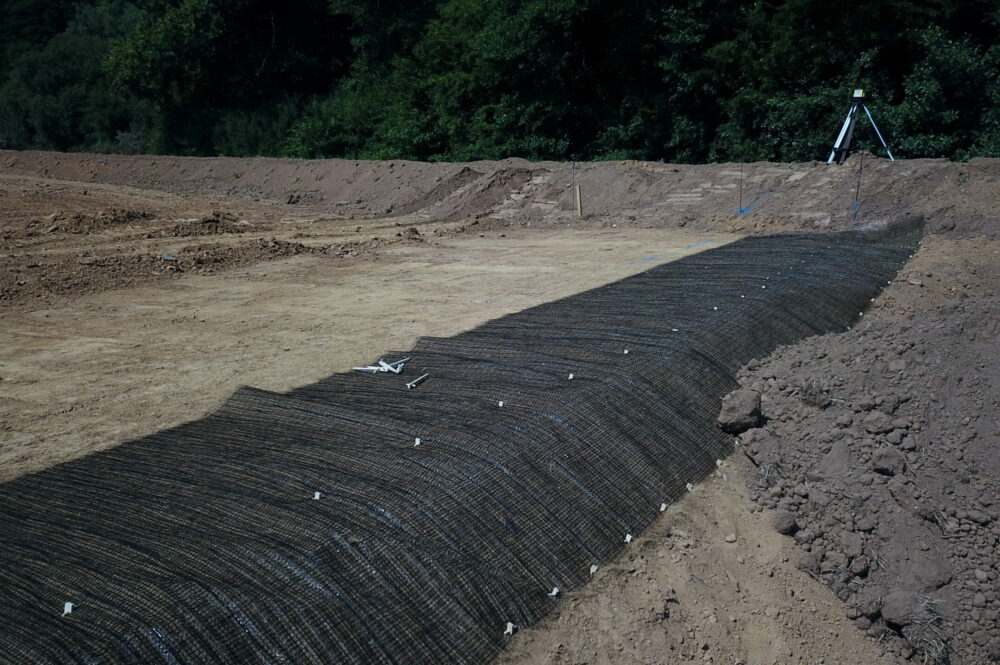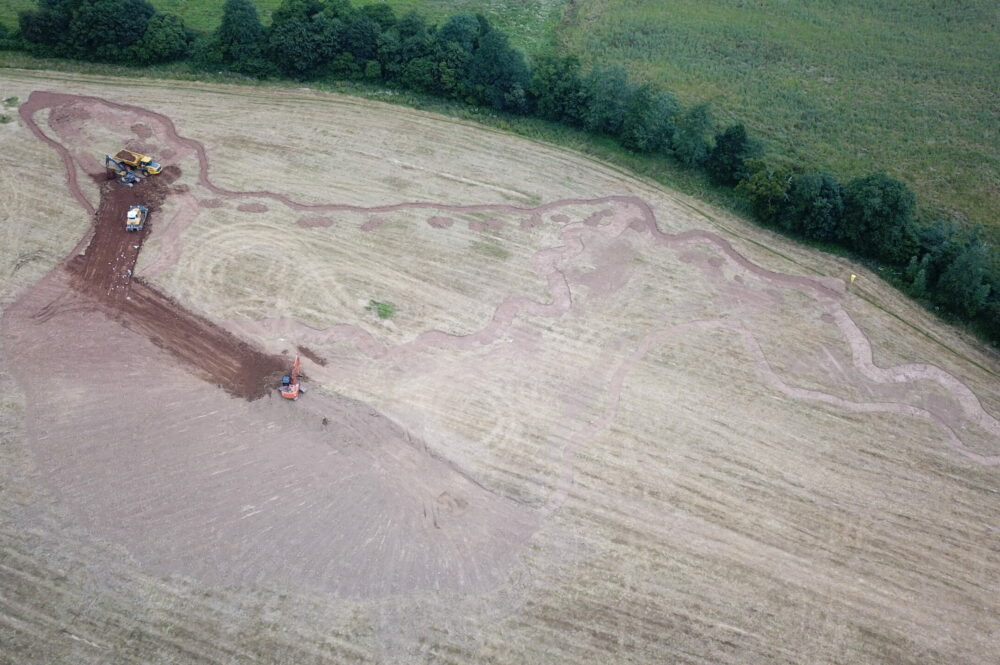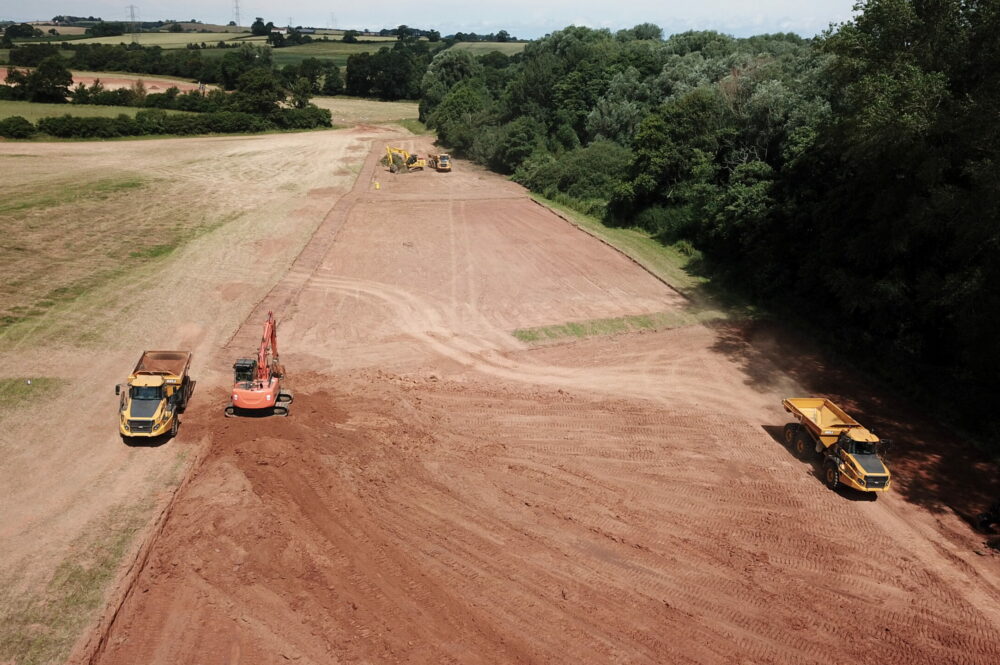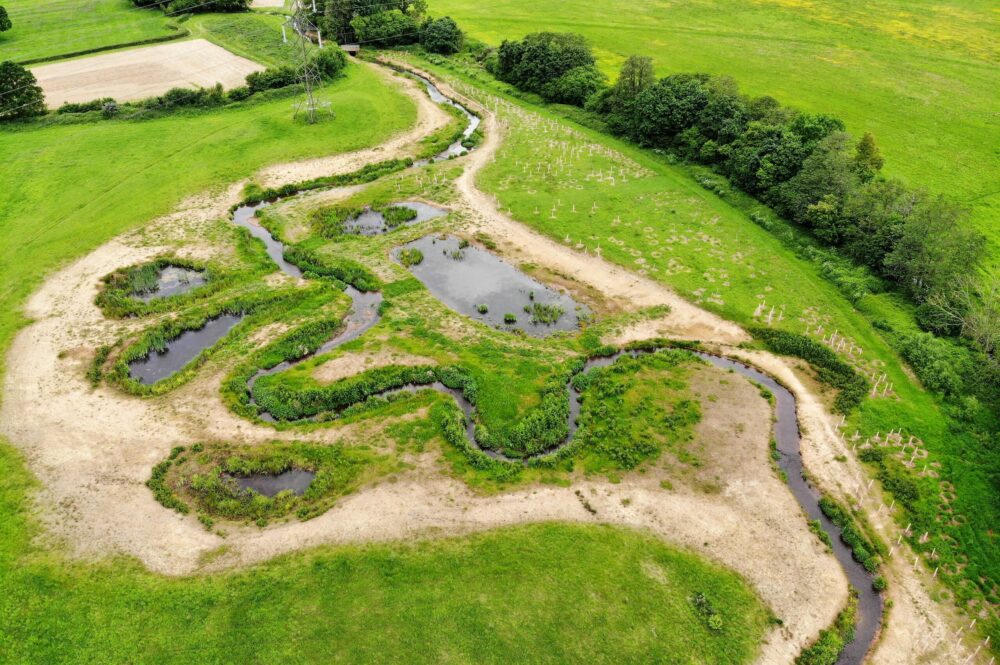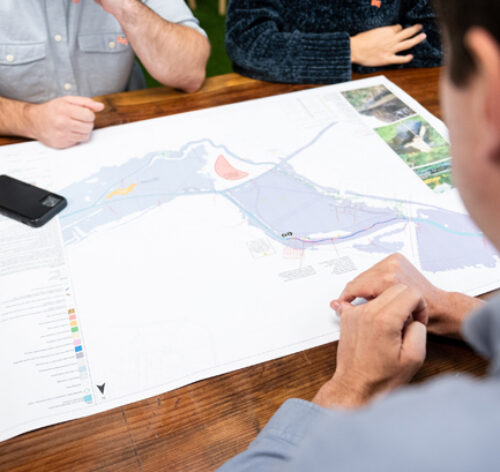FiveRivers were contracted to Design & Build, two multi-benefit wetlands to improve the quality of water entering the drinking water reservoir, whilst significantly enhancing wildlife and biodiversity.
The scheme involved excavating two wetlands on the same site. A naturalised wetland was designed to capture course sediment and silt by connecting the Durleigh Brook back to its floodplain. The other, an engineered wetland, was designed to improve the quality of supply from the Bridgewater and Taunton Canal, and also recycled water from the water works with respect to sediment, nutrients and pesticides.
The design of the two wetlands will in the long term reduce sediment ingress into the reservoir and the resulting costs relating to the treatment of the raw water for supply.

42,500 marginal plants planted

25,000m3 of excavated material from the new wetlands were regraded outside of the floodplain
An additional 15 wetland scrapes and ponds created in 2024

Project requirements
The problem
To design multi-benefit wetlands with the appropriate retention times, trap contaminated silt in key areas to enable effective silt removal in the future. Incorporate all site won material within the scheme, to significantly reduce the requirement to import clay, gravels, and woody material. Innovative design and use of material enabled the project to be delivered on a tight budget.

Our approach
The solution
Wetland 1’s objective is to breakout the Durleigh Brook from its heavily incised, tree lined channel, reconnect to its floodplain and provide sedimentation areas to capture course sediment and silt. Durleigh Brook did not have any telemetry data so a comparative channel, with similar catchment size and geology was used to calculate dimensions of the new channel and wetland features. We worked closely with the Client to utilise their local knowledge to maximise design benefits. On completion of the Durleigh Brook wetland, gravels from the former channel were returned to supplement gravel discovered during excavation, this minimised imported material and reduced construction costs and the carbon footprint of the project.
Wetland 2 is a canal water backwash wetland, with a designed retention time exceeding 7 hours. The first and deepest cell within the wetland was designed to allow for initial sediment deposition following input from the wastewater back wash and canal inputs. The further two cells were designed as marshy wetland areas planted with marginal species, adding further treatment for nitrates and pesticides along with improvements to biodiversity. The Canal Backwash Wetland will have two years to establish before treatment of water will begin.
In addition, downstream of the wetland, the water passes through wet woodland before entering the reservoir. Here leaky dams and additional ditch blocking features were installed as a final screening process to remove any remaining suspended solids.
In 2024, FiveRivers returned to create further wetland features including an additional 15 ponds and wetland scrapes adjacent to the previously created naturalised wetland. During the site mobilisation phase, our site team set up exclusion zones for tree protection areas following an arboriculture assessment by Wessex Water, public rights of way (PRoW) diversions were put in place and GS6 goal posts were put in place for machinery to move under the 400kv powerlines.

Project outcomes
The results
Wetland 1 – Construction of 450m of new channel with 8000m2 of new wetland and floodplain
Wetland 2 – Excavation of 5,200m2 of sediment traps and ponds with 2600m2 of multi-species reed filter beds.
There is long term monitoring in place to compare chemical and biological data and to see the effectiveness of the works.
Since completion, the scheme has been honoured by the Green Apple Environment awards for sustainable development receiving a gold award for ‘habitat and diversity’ and a bronze award for ‘water management’, highlighting global excellence in environmental best practices.
Contact us today.
First Year Monitoring Results
Reverting the poor-quality cultivated land to natural grasslands, restoring the Durleigh Brook to a more natural plan form and reconnecting it to its floodplain has resulted in the biodiversity and habitat availability on site to increase by between 55 and 76 per cent, calculated using Natural England’s own Biodiversity Metric. These biodiversity improvements will only continue as the habitats grow and mature.
Weekly Water Quality monitoring has also been carried out since construction was completed showing reductions in the total amount of ammonia present in the water by 75%, and reductions in the total phosphorus and sediment loading by a third.
The results from the wetlands at Durleigh has led Wessex water to be more determined to choose nature-based solutions, such as wetlands, to support the quality of water where possible over ‘grey’ infrastructure solutions that cause more impact on the environment, carrying significant carbon implications, cost billions of pounds and are extremely disruptive to communities.
Our services
Services implemented.

Contact us
Looking to talk to an expert?
Luke Roberts
Design & Construction General Manager
Get in touch by either phone or email to speak with Luke and discuss your needs.
Telephone: 01722 783 041

Thank you for booking.
To stay in touch, please sign up to our newsletter.
Return to five-rivers.com


